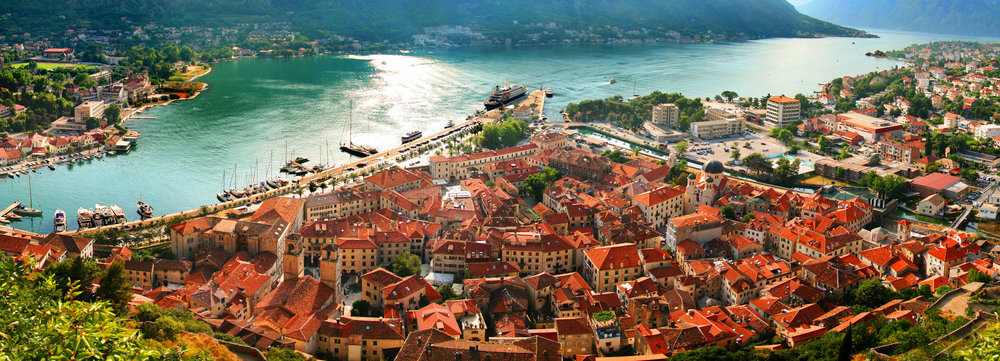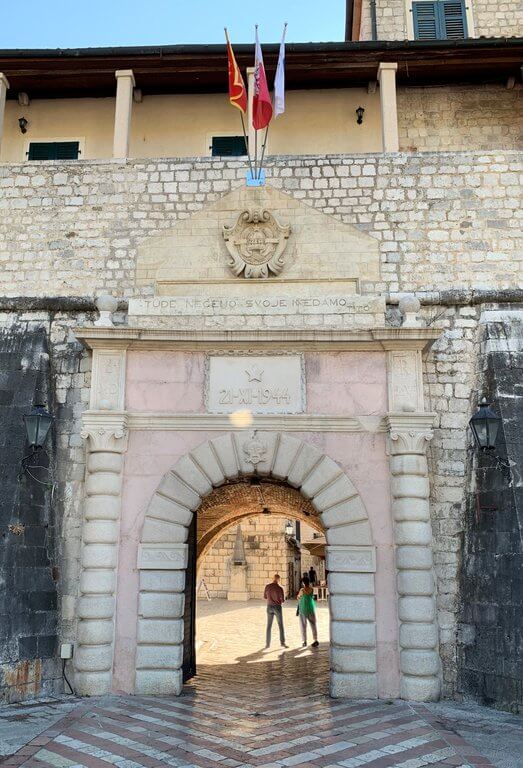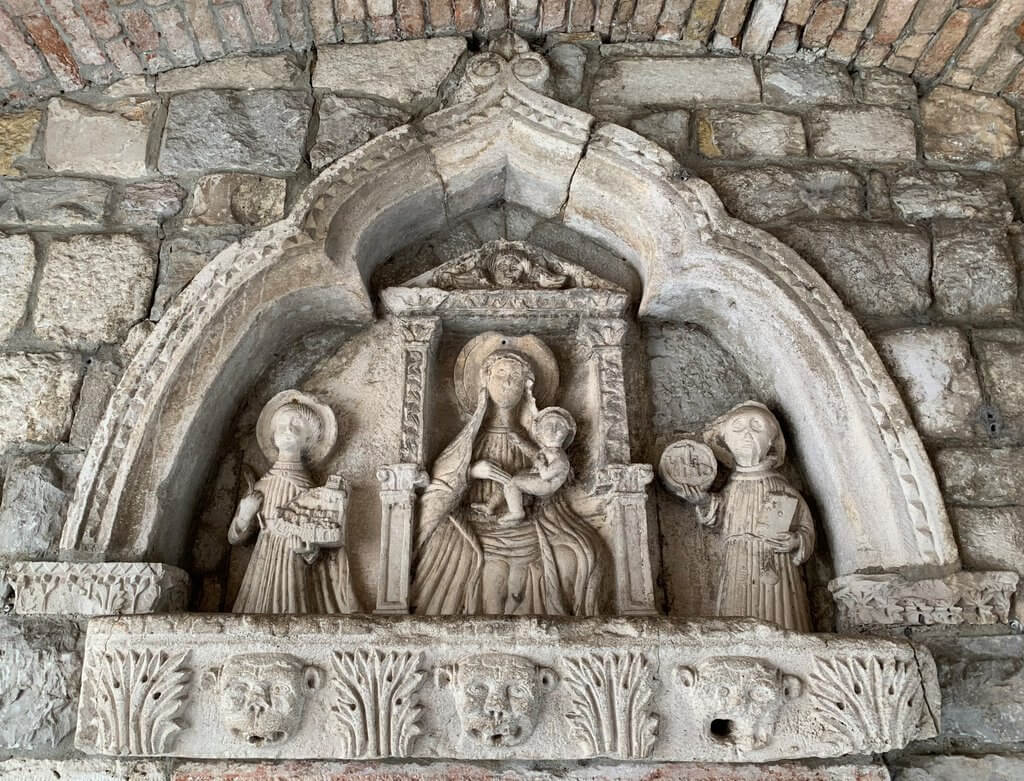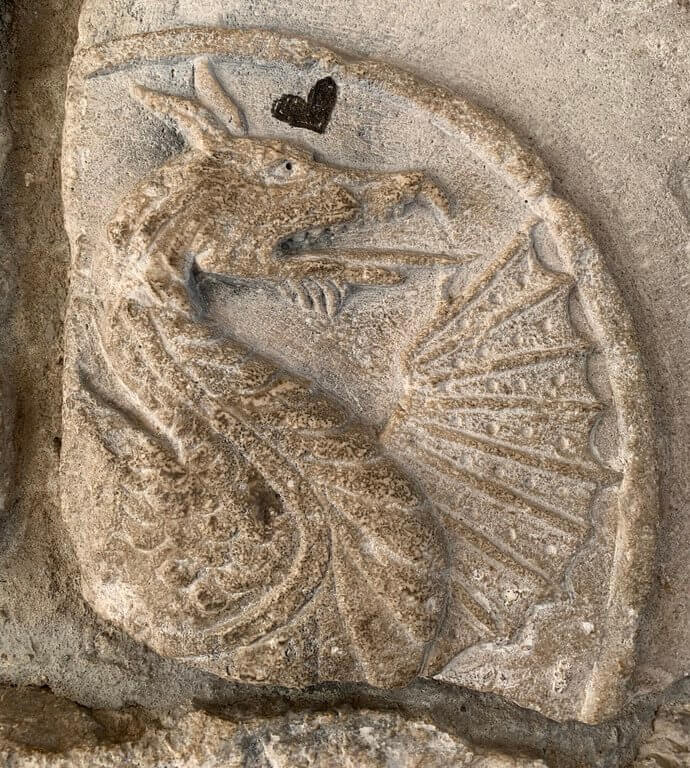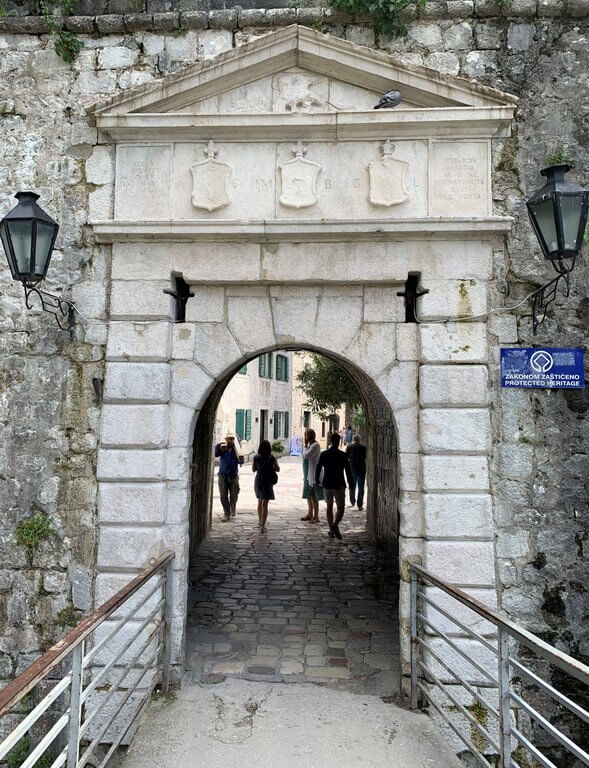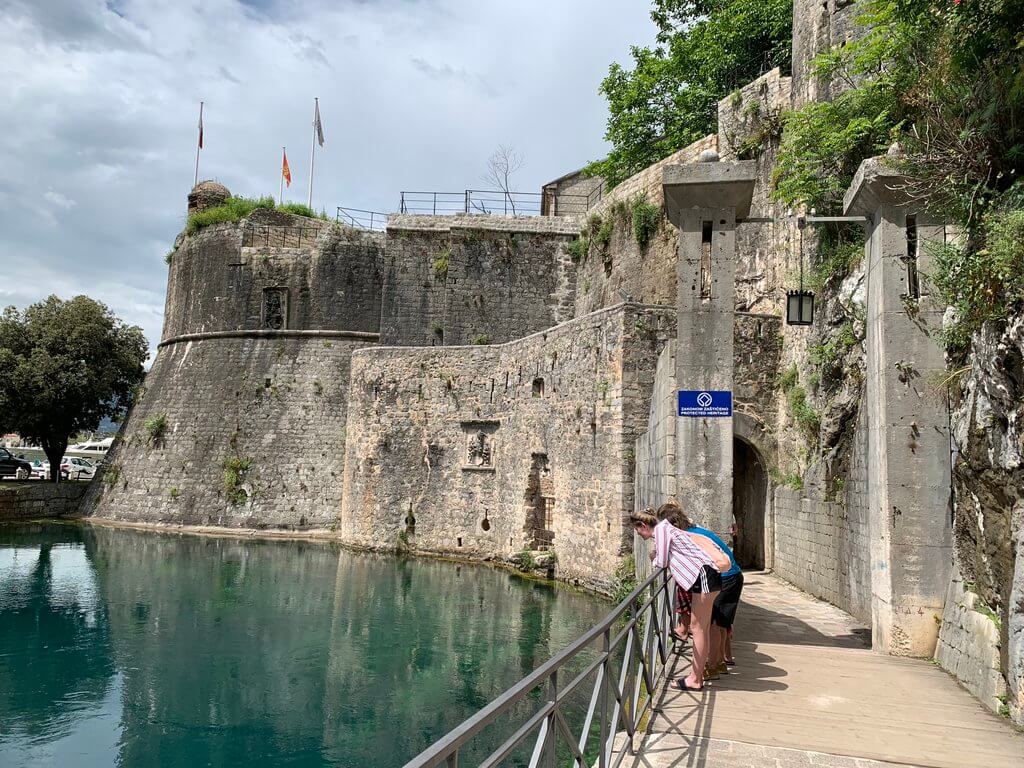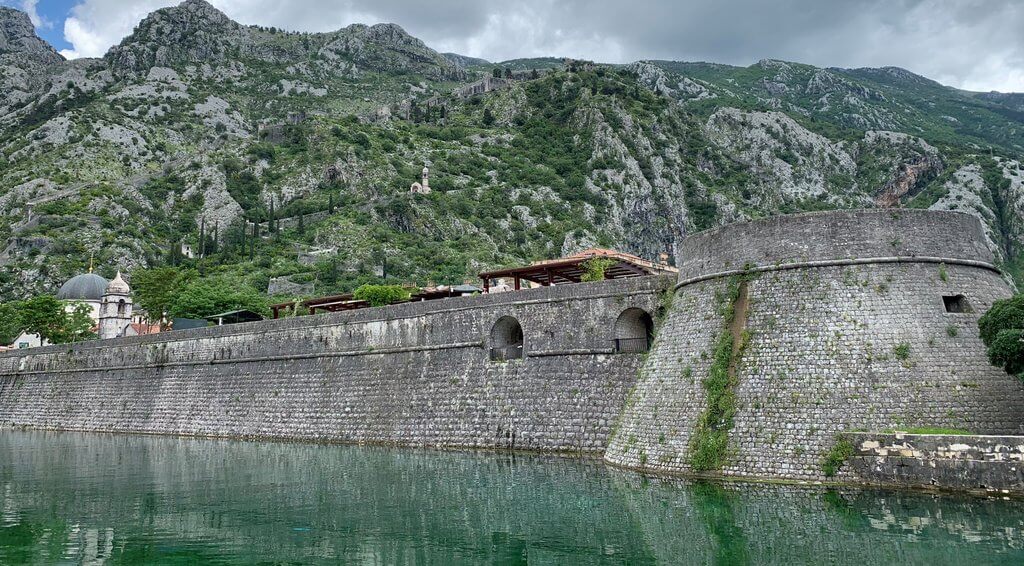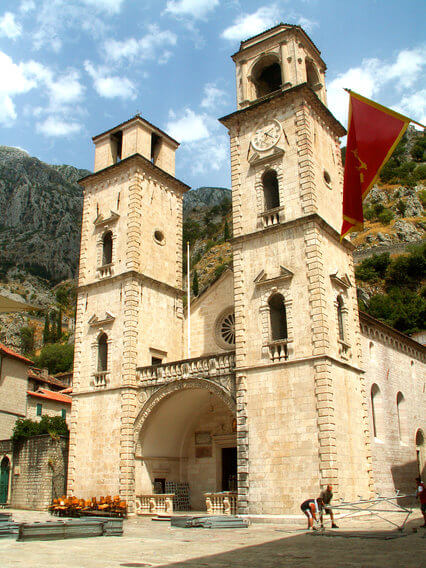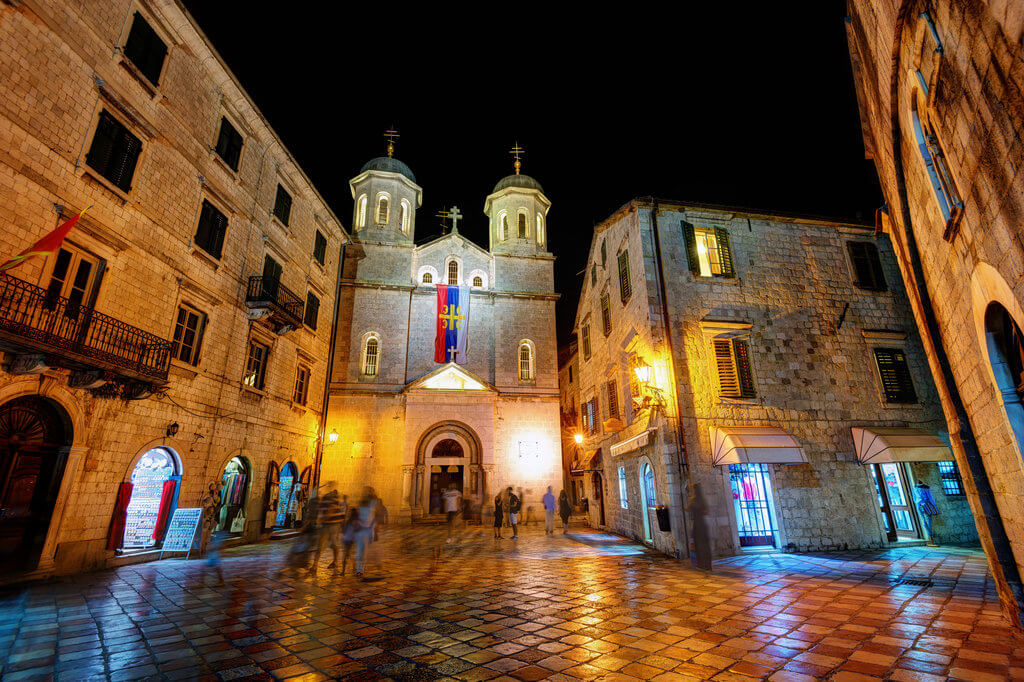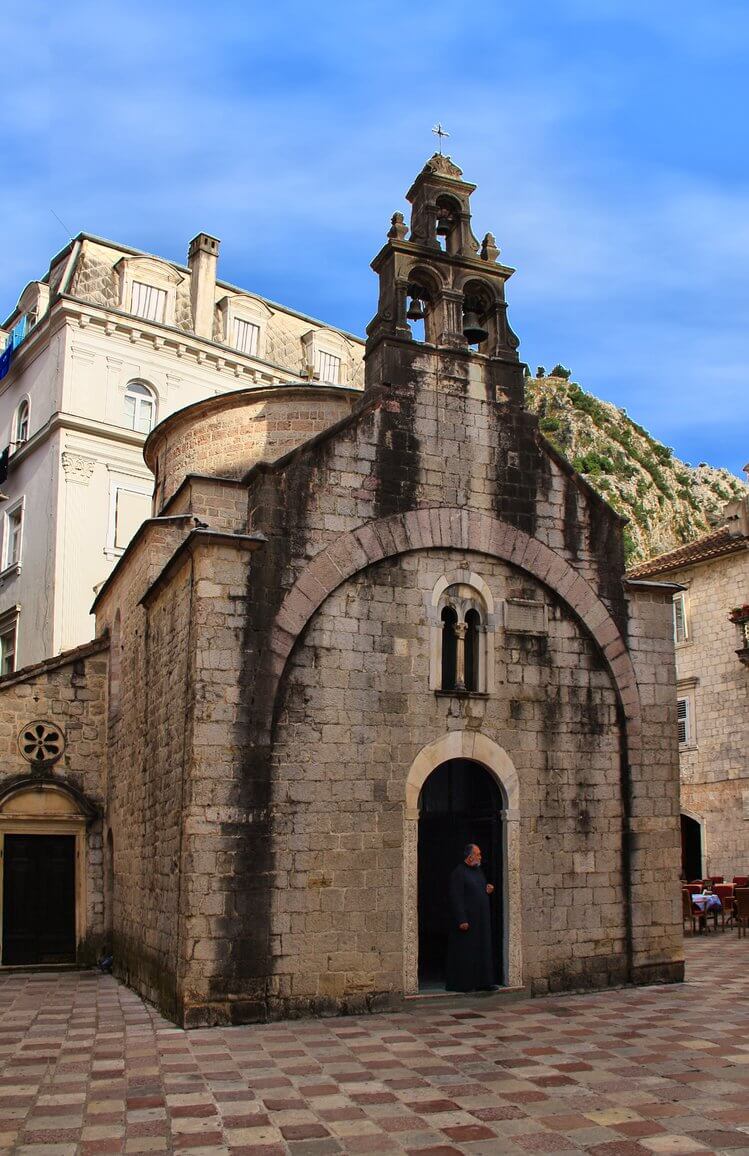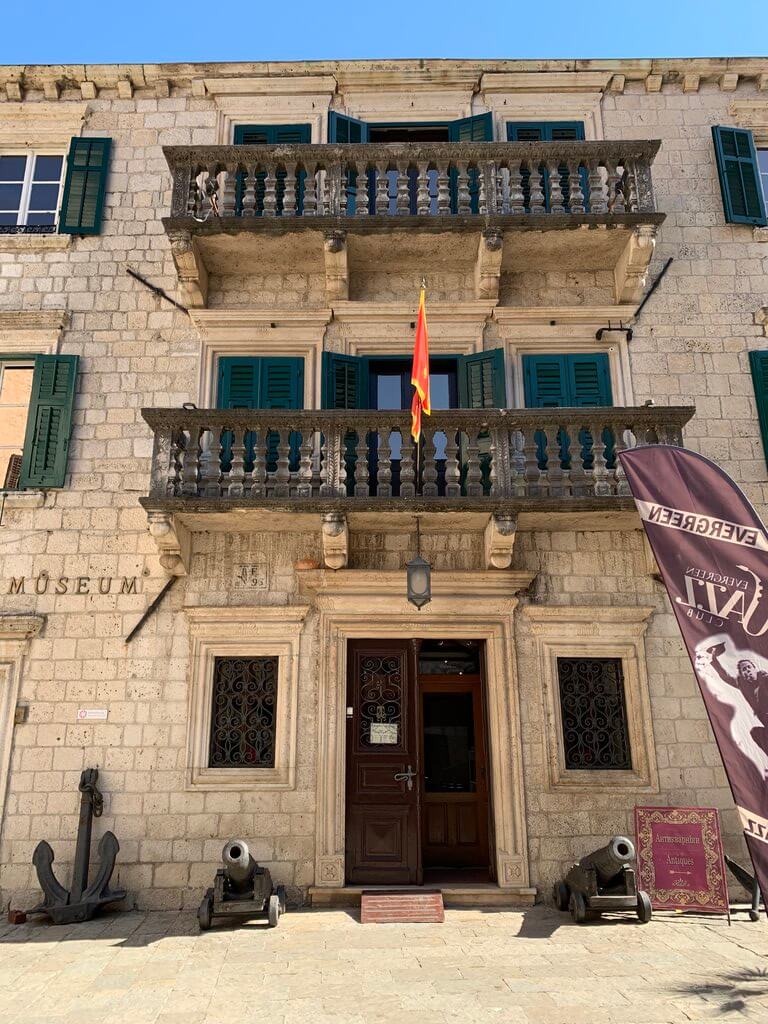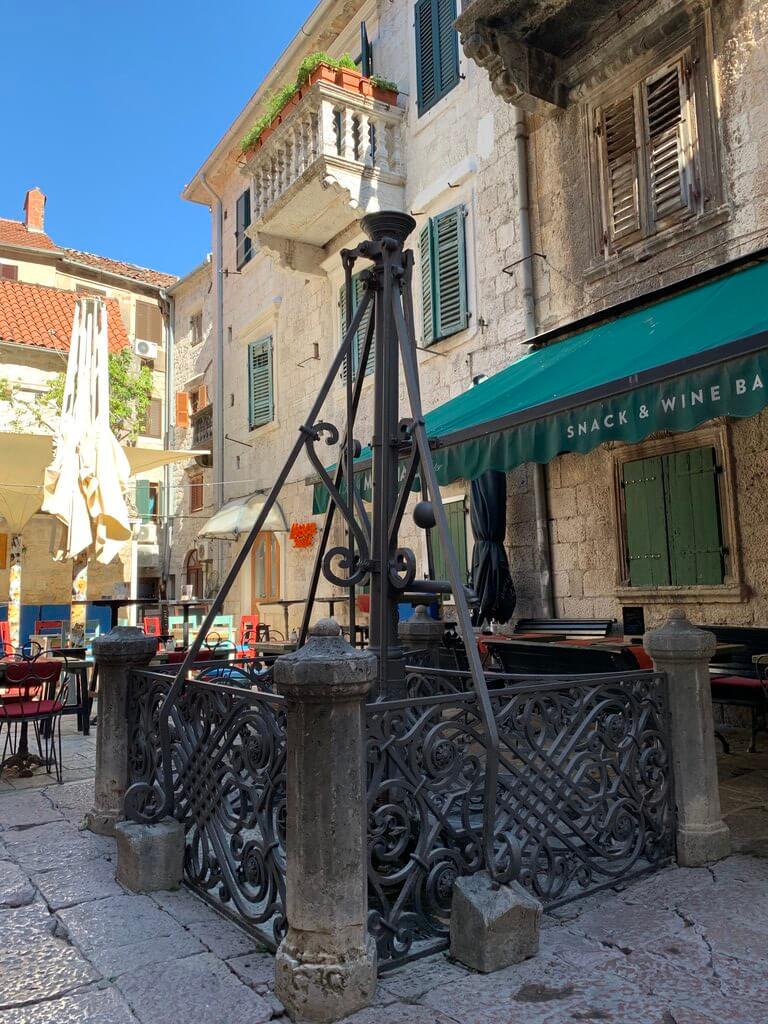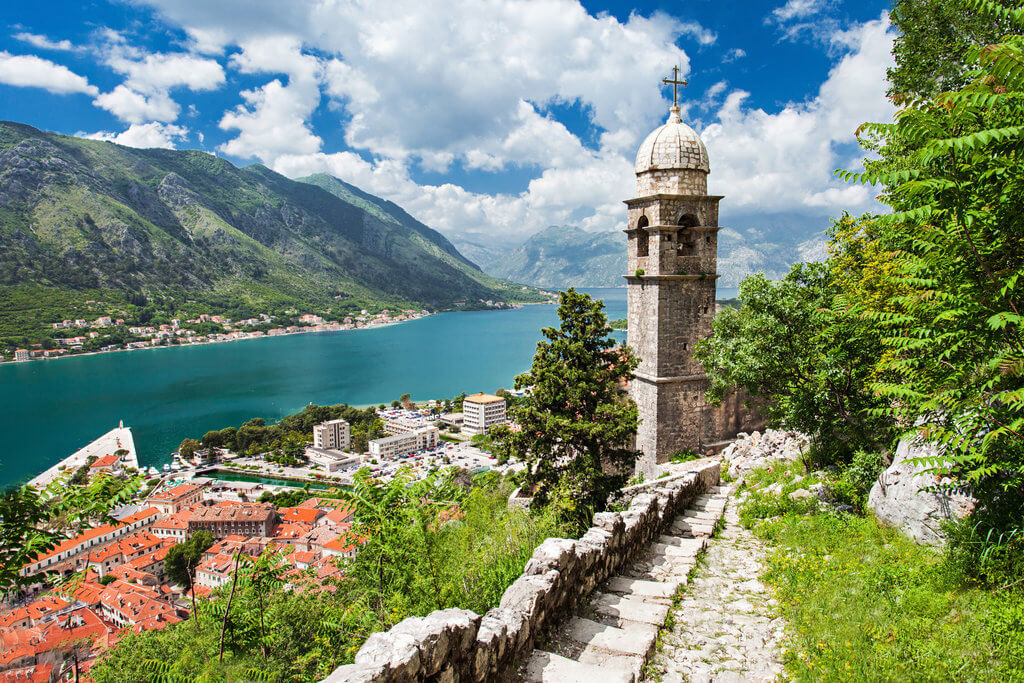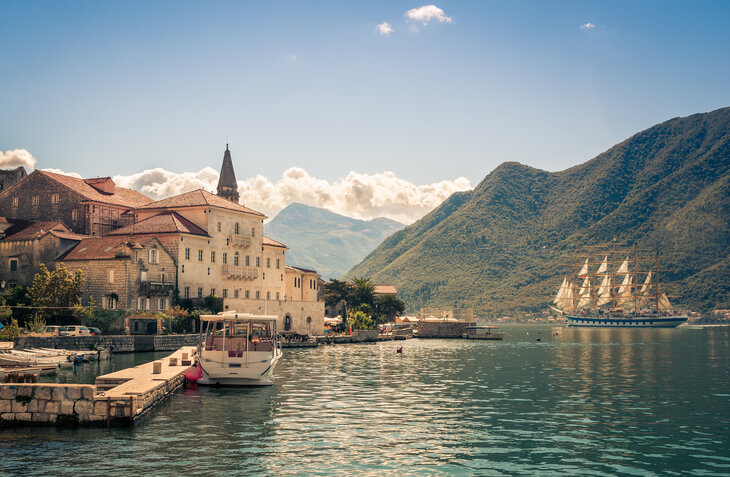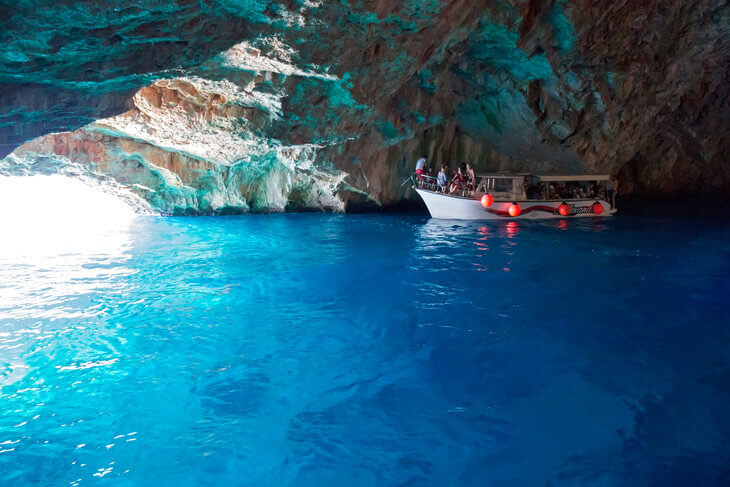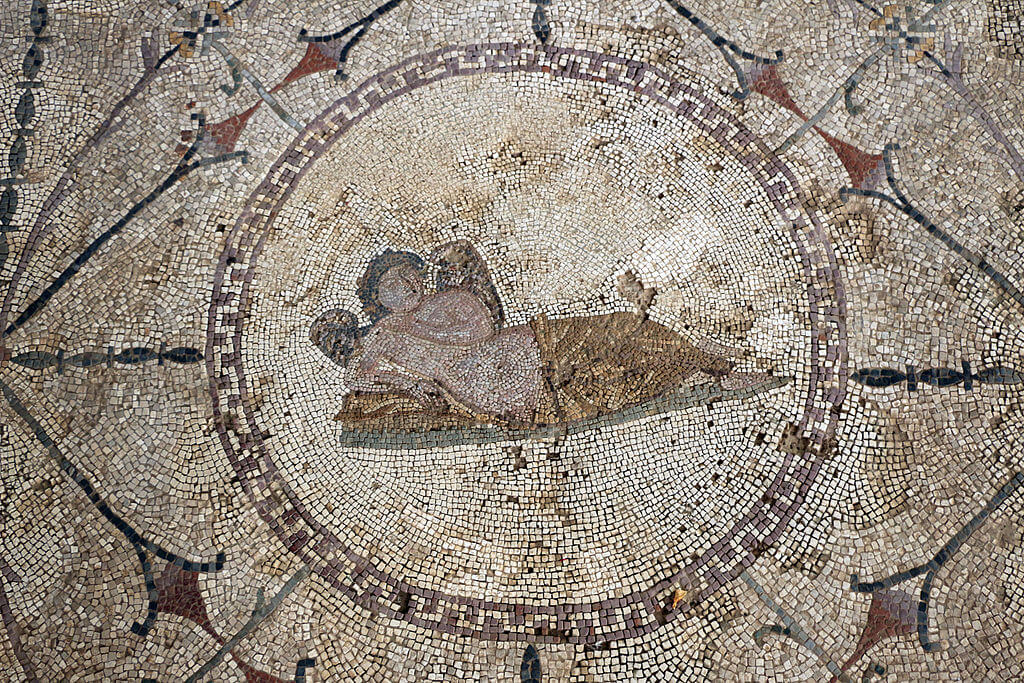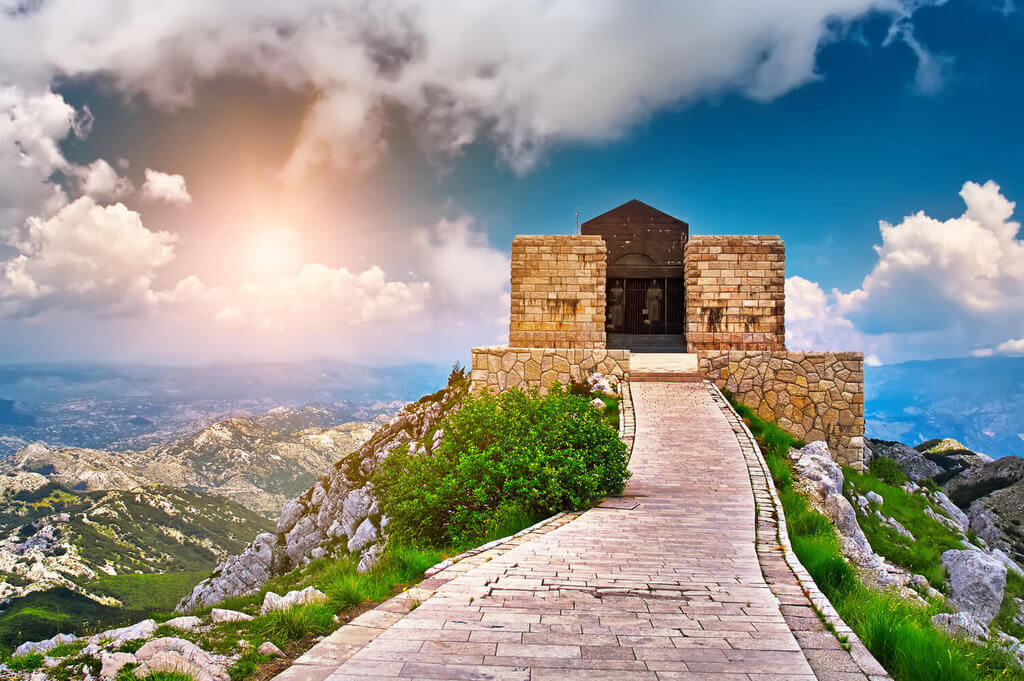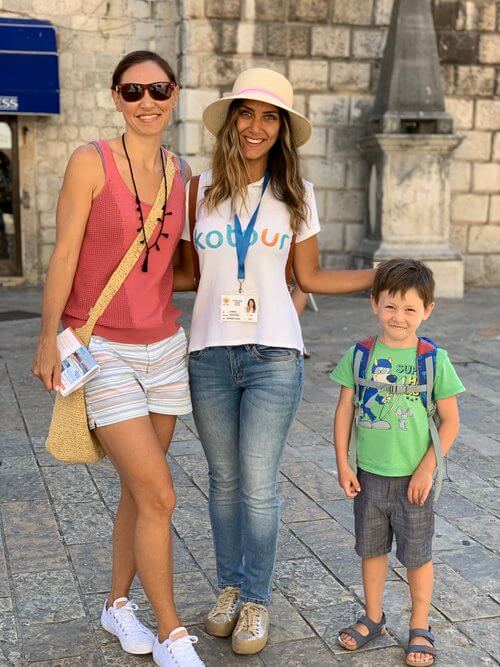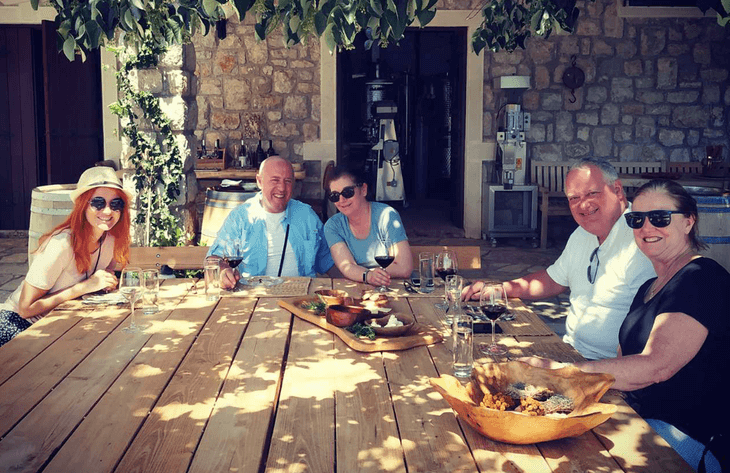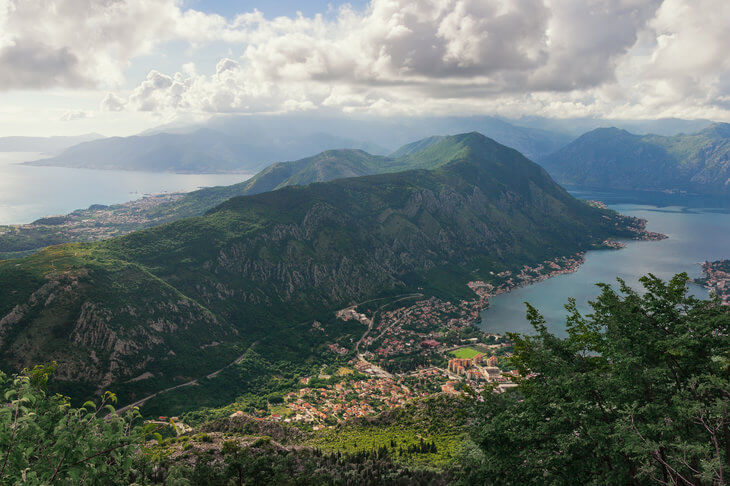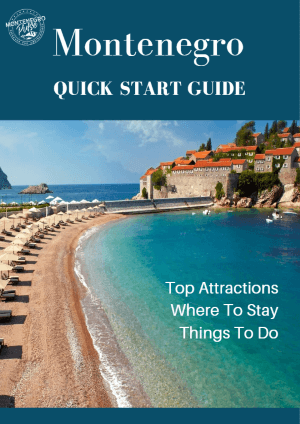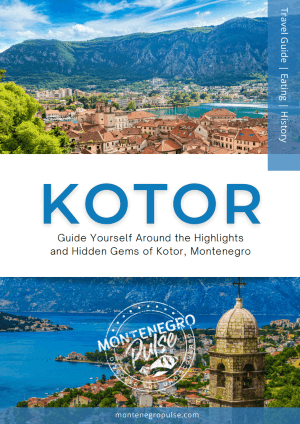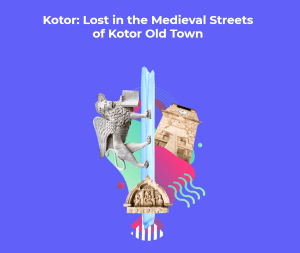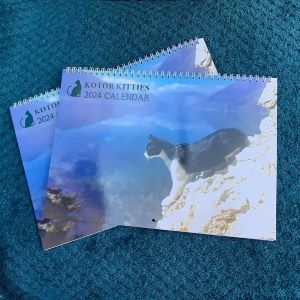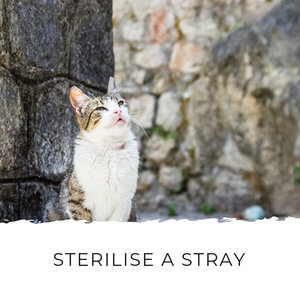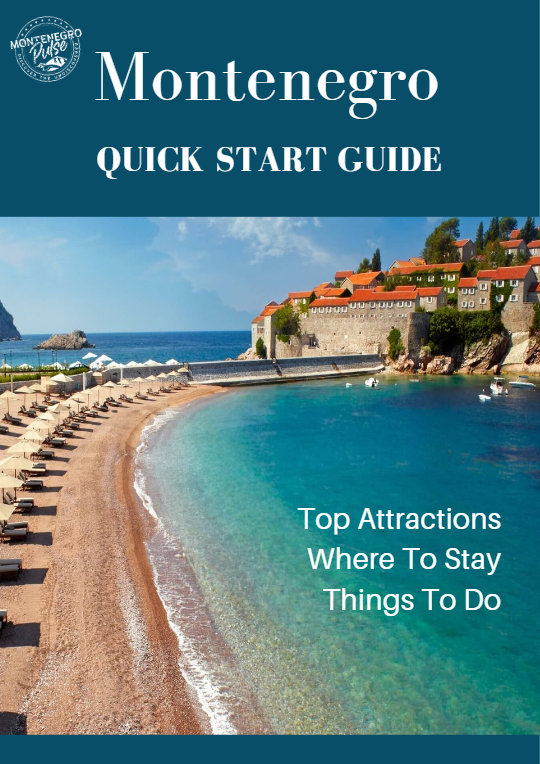Montenegro Pulse contains affiliate links and is a member of the Amazon Services LLC Associates Program. If you make a purchase using one of these links, I may receive compensation at no extra cost to you. See my disclaimer for more information.
Highlights of Kotor, Montenegro: Top 13 Things to See and Do in Kotor
Discover the highlights of Kotor, Montenegro. On this list you'll find must-sees mingled with authentic experiences that will bring Kotor's magic to life!
If you've only got a short time to spend in Kotor, it helps to know what you want to see in advance.
There's a free map you can get at the information kiosk in front of the Sea Gate, but there are 60 sites listed on it and not all of them are worth seeing.
This list of the highlights of Kotor will help you prioritise what to see and make the most of the time you have is this gorgeous little town.
If you grab a map as you enter town and make your way around the attractions on this list you'll know you saw the most beautiful sights in this unique town.
This page will also help you plan your time and know what to bring with you. It will help you choose the best way to see the sights, whether it's on your own, on a tour or by playing a game.
Intrigued?
Let's explore the highlights of Kotor!
Quick Links
Kotor Attractions | Attractions Near Kotor
Accommodation Near Kotor Attractions
Highlights of Kotor, Montenegro
Kotor's top attractions are all in the pedestrian old town, so you can easily get around on foot. Depending on how much time you have, you can also visit more attractions nearby on a tour.
While Kotor is very beautiful, a lot of Kotor's attractions are only really interesting if you know the stories behind them. That's why I recommend taking a tour or getting a copy of my guide to Kotor to take with you. These stories of the events and people of Kotor will make your visit so much more interesting.
Here are the highlights of Kotor Montenegro:
- Sea Gate
- River Gate
- Gurdić Gate
- Kampana Tower and citadel
- St Tryphon's Cathedral
- St Nicholas' Church
- St Luke's Church
- Saint Mary's Church
- Pima Palace
- Grgurina Palace / Maritime Museum
- Karampana Fountain
- Farmers Market
- San Giovanni Fortress
Find out more about each of the main attractions in Kotor old town below.
Sea Gate
The Sea Gate (Main Gate) was built by the Venetians, who ruled Kotor from 1420 to 1797, in 1555.
Originally the gate was also decorated with the Venetian winged lion. In 1897 the Austrians also added a plate that included an Austrian coat of arms, but both the Venetian and Austrian reliefs were destroyed after Kotor's liberation from Nazi occupation.
You’ll now see the date 21-XI-1944 where the Venetian winged lion was. This commemorates the date Kotor was freed.
A Yugoslav coat of arms was added where the Austrian coat of arms was. And a quote by Yugoslav president, Josip Broz Tito, was added where the Austrian quote about justice was. It says ‘Tuđe nećemo, svoje ne damo’ – ‘What belongs to others we don’t want, what is ours we will never surrender’.
As you walk through the gate you'll see a Gothic relief on your right. The relief is from the 15th century and shows the Virgin Mary with Christ. On her right is Saint Tryphon, the patron saint of Kotor, and to her left is Saint Bernard.
River Gate
he River Gate (North Gate) was built in 1540 in memory of the attack in 1539 led by Heyreddin Barbarosa, a Turkish Ottoman Empire admiral who had already conquered Herceg Novi and was responsible for much of the empire’s domination of the Mediterranean.
The Renaissance-style gate has a tympanum (triangular shape above the gate) with a relief of a fortress and the Venetian winged lion holding a closed book.
The gate and north side of the town were protected by the Škurda River, which flows along the north walls of Kotor. Originally part of the bridge over the Škurda River was a drawbridge that could be raised and lowered by sentries. This is the gate Montenegrins from the interior would use to come into Kotor on market day. They’d bring their produce, like smoked ham and cheese, to sell at the Montenegrin Market and the sentries at the gate were tasked with taking their weapons as they came through the gate.
Gurdić Gate
The Gurdić Gate (South Gate) is a set of three gates.
The outermost gate is the newest and was built in the 18th century by the Venetians. You’ll see it has two massive pillars with slots which held iron wheels for the chains which lifted and lowered the drawbridge over the spring.
The middle gate was built in the 12th and 13th centuries in the shape of a sickle, which is typical of the Romanesque architecture of the time.
The innermost gate was built in the 16th century and was built in the style of Venetian architect, Michele Sammichelli, who designed many of the Venetian fortresses in the Adriatic in the first half of the 16th century.
On the inside of the outer gate you’ll see the old mechanism used to raise and lower the drawbridge over the spring.
Kampana Tower and Citadel
Kampana Tower and the citadel were built from the 8th to the 19th centuries and controlled access to Kotor from the sea.
Climb the stairs up here and walk along the walls in both directions. You’ll get great views and there’s a café where you can grab a drink overlooking the town.
Entrance: Free
Time needed: 5 to 15 minutes
St Tryphon's Cathedral
Saint Tryphon's Cathedral (Katedrala Svetog Tripuna) is the most iconic building in Kotor and is unmistakable with its two bell-towers and backdrop of San Giovanni Fortress snaking up the mountain behind it.
The cathedral was built on the site of an older church, which was consecrated on 13th January 809 to house the remains of Saint Tryphon, which were brought from Constantinople (today’s Istanbul). St Tryphon is revered by both Catholic and Orthodox faiths and is the protector saint of Kotor.
You can visit St Tryphon's Cathedral and the treasury joining it. In the treasury you'll see local and foreign works of art, traditional dress, jewellery and historic artefacts from Kotor.
St Nicholas' Church
St Nicholas’ Church (Sveti Nikola) is a Serbian Orthodox church that dominates St Luke’s Square (Trg Svetog Luka). You’ll recognise it by the twin domed towers and the flag that hangs down the centre. It’s a relatively new building, completed in 1909 after a fire ruined the original church that was built in 1810.
Highlights of St Nicholas' Church:
- Icons from the 15th to 19th centuries Portraits of Mark, Luke, Matthew and John near the entrance. These were gifts from the Russian Orthodox Church
- Mosaic of Saint Nicholas above the entrance door by Czech artist František Ziegler
Entrance: Free
Time needed: 5 to 10 minutes
St Luke's Church
Next to Saint Tryphon’s and Saint Nicholas’, Saint Luke’s (Sveti Luka) is a relatively unimposing building, but it’s one of the most important in Kotor.
It's so important because it served both Kotor's Catholic and Orthodox citizens.
Originally Saint Luke’s was a Catholic church, but became Orthodox in 1657, when it was given to Kotor’s Orthodox citizens, particularly those who had fled the Muslim Turk invasion in Grbalj the year before. It still kept a Catholic altar until 1812 and both Catholic and Orthodox masses were performed here. Bokelji (Bay of Kotor residents) still hold Saint Luke’s dear as an example of the bay’s traditional religious freedom and tolerance.
Highlights of Saint Luke’s Church:
- Large crucifix made in 1710 Iconostasis in St Spiridon Chapel by Daskal Dimitrije, whose family founded the Dimitrijević-Rafailović icon-painting school
- Single fragment of original 12th century fresco showing the bottom halves of three saints
- The floor of the church is made of panels which cover the tombs of Kotor citizens who were buried here until the 1830s, when the practice was outlawed by the Austrian authorities
Entrance: Free
Time needed: 5 minutes
St Mary's Church
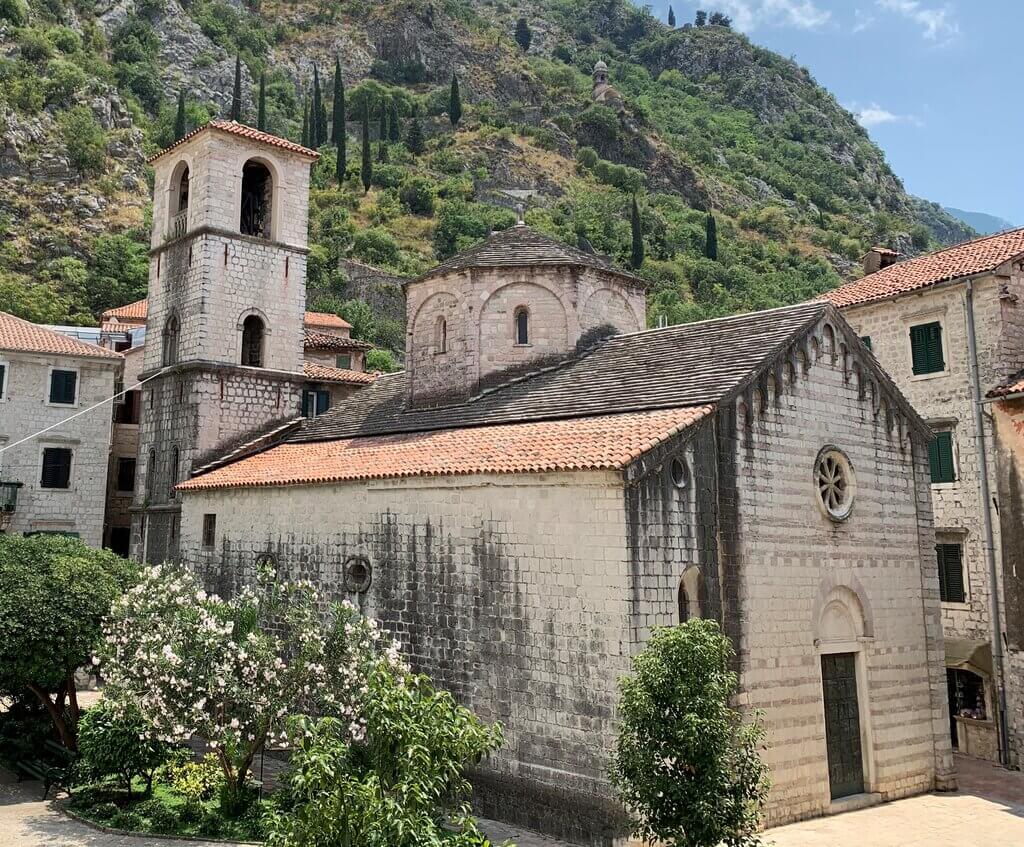 HIghlights of Kotor Montenegro: St Mary's Church
HIghlights of Kotor Montenegro: St Mary's ChurchSaint Mary’s Church is a 13th century church built on the remains of a 6th century Christian church. The older church had a pool for baptizing adults, which suggests it was the bishop’s seat and therefore most important church in Kotor.
The current church was consecrated in 1221 and was built with alternating rows of delicate pink and grey stone. The chapel of Saint John (Sveti Ivan) was added in the 15th century, and the bell-tower was added in the 18th century. The fresco fragments inside the church date to the 14th century.
The most notable and valuable piece of the church is the bronze bas-relief door. It depicts the life of Blessed Osanna of Cattaro and was made by artist, Vasko Lipovac. Saint Mary’s church is also known as Saint Mary Collegiate and the Blessed Osanna, after Osanna of Cattaro.
Osanna of Cattaro (1493-1565) was born Jovana Kosić. She was an Orthodox shepherdess who, at age 14, came to Kotor, which was called Cattaro and part of the Republic of Venice at the time, and worked for the wealthy Buća family. In Kotor she converted to Roman Catholicism and changed her name to Katarina.
In her late teens she felt called to become an anchorite, a religious hermit who is permanently sealed in a cell attached to a church. Small windows in the cell allowed for food deliveries, waste removal and visitors, but otherwise anchorites spent their time in contemplation, prayer and giving advice to followers. The choice to become an anchorite was irreversible and if one tried to escape they were forcibly returned and their soul damned to Hell.
Katarina became an anchorite but her first cell was destroyed in an earthquake. She moved to a cell at Saint Paul’s church, where she stayed for the remaining 52 years of her life, and took the name Osanna.
She’s credited with saving Kotor from the plague and an attack by the feared Ottoman admiral, Hayreddin Barbarossa, in 1539. During the fierce attack the locals appealed to her for help and she took the radical step of leaving her cell. Osanna climbed onto the northern ramparts, where her appearance inspired local forces to repel the invaders and the Ottomans were forced to retreat.
Osanna was also known for advocating peace between feuding families and became known as ‘The Virgin Reconciler’ and the ‘Angel of Peace’. She was formally beatified by Pope Pius XI in 1934.
What to see in Saint Mary’s Church:
- Bronze bas-relief door by Vasko Lipovac
- 14th century frescoes
- Silver and glass sarcophagus which contains Blessed Osanna’s remains
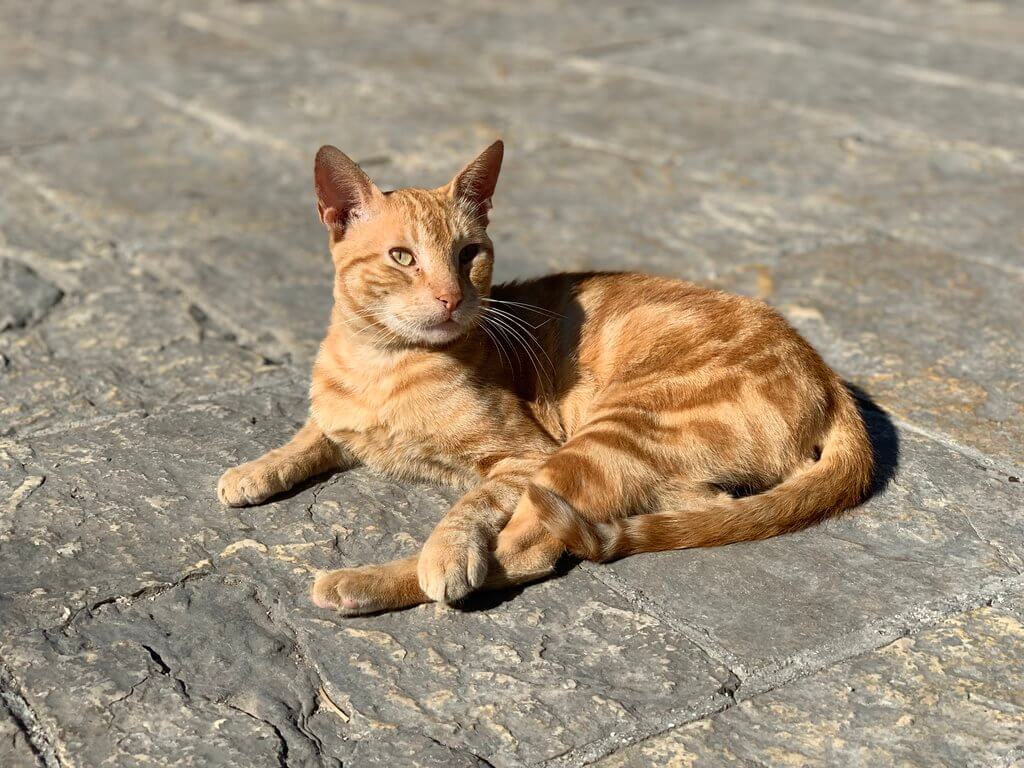
Kotor’s Cats
Saint Mary’s sits in Wood Square, which is home to many of Kotor’s cats. Cats used to help control rodents and snakes in Kotor and they’ve become a symbol of the town.
Lots of shops sell cat-themed souvenirs, but instead of taking home a cat-themed trinket I recommend making a donation to Kotor Kitties, a US and UK registered non-profit that pays for the sterilisation and vaccination of Kotor’s street cats.
If you do want a cat-themed souvenir to take home, you can find hand-made gifts and souvenirs at Kotor’s Cats (not to be confused with a similar shop called Cats of Kotor), which is in the alley opposite Saint Anne’s Church (#26 on the map, 42.425220, 18.772002). Danijela, the owner, feeds, sterilises and cares for a huge number of cats and kittens in Kotor old town and you can rest assured shopping there will help Kotor’s furry mascots!
Pima Palace
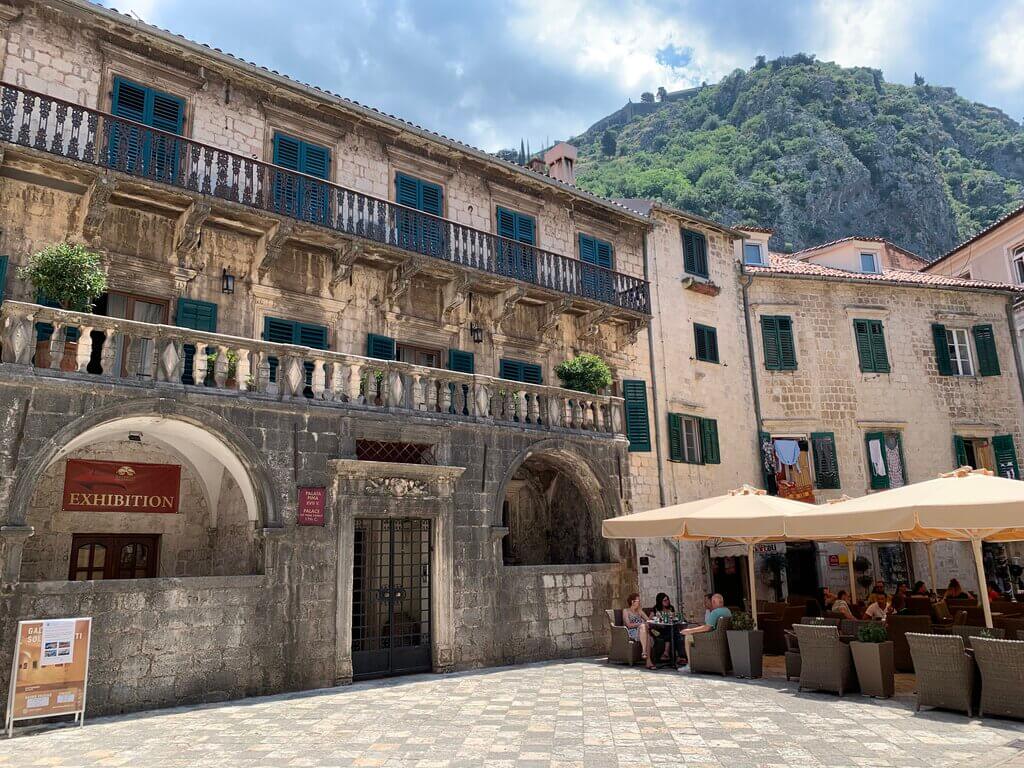 Highlights of Kotor Montenegro: Pima Palace
Highlights of Kotor Montenegro: Pima PalacePima Palace is one of the most regal and beautiful palaces in Kotor. It was built by the Pima family, who were among Kotor’s nobility between the 14th and 18th centuries. There were several renowned Pimas, including poets and a professor, but the family died out in the 18th century.
The palace was built in the 17th century after the 1667 earthquake that badly damaged many of Kotor’s buildings. It has Baroque features, like the consoles which support the second-floor balcony and the ornate window frames. There are also Renaissance details, like the interior courtyard and the coat of arms with angels above the main entrance. The second-floor balcony has a large balcony with wrought iron fence, made by Kotor’s renowned blacksmiths.
Today Pima Palace is the home of the Gallery of Solidarity. The art on display is relatively modern, coming mostly from Yugoslav artists during the 1970’s.
Hours: 9am to 2pm and 5pm to 9pm daily
Entrance: Free
Time needed: 20 minutes
Grgurina Palace / Maritime Museum
The Grgurina family came to Kotor from Kopar in Istria (Croatia) in the 17th century and Count Marko Grgurina built Grgurina Palace in 1732. In 1813 Bishop Marko Grgurina bequeathed the palace to the government and it was turned into the Kotor Maritime Museum at the end of World War II.
Kotor gained its wealth and power as a trading port that connected the Serbian Nemanjić Dynasty with the rest of Europe and its history and culture are inextricably intertwined with the sea. The maritime museum’s three floors are filled with beautiful examples of the area’s history including clothing, weapons, and furniture.
Hours:
15th April - 30th June: 8am - 6pm Monday - Saturday, 9am - 1pm Sundays and public holidays
1st July - 31st August: 8am - 11pm Monday Saturday, 10am - 4pm Sundays and public holidays
1st September - 15th October: 8am - 6pm Monday Saturday, 9am - 1pm Sundays and public holidays
15th October - 14th April: 9am - 5pm Monday Saturday, 9am - 12pm Sundays and public holidays
Entrance: €4 per person with audio guide
Time needed: 1 hour
Karampana Fountain
You'll see quite a few fountains as you explore Kotor. Yes, you can drink the water so go ahead and fill your drink bottle as you explore the town!
At one time Karampana Fountain was the only public well in Kotor and it was where people, especially the women of the town who worked as laundresses or water-carriers, would gather to get water and the latest gossip.
No one knows exactly how Karampana Fountain got its name, but there are a couple of theories. The first is that the name comes from a word meaning something that’s old and doesn’t work very well.
The other theory is a bit more sordid...
In 14th century Venice there was a chain of brothels, one of them was in a derelict palace that used to belong to the Rampani family. It was known as Ca’Rampani and the word was used to refer to brothels in general. There’s no confirmation that the Ca’Rampani brand spread to Kotor, but stranger things have happened!
Hours: 24 hours
Entrance: Free
Time needed: 2 minutes
Farmers Market
There has always been a market in Kotor. Farmers from inland would bring their produce down the Ladder of Kotor to sell it in the town.
Just outside the town walls, (between numbers 10 and 11 on the map you get from the information centre by the Sea Gate) you’ll find vibrant arrays of local produce. This is one of the best place to taste Montenegro.
If you want to try traditional fare pick up some olives marinated in garlic and parsley, round cheeses, olive oil, pomegranate juice, prosciutto, fresh-caught fish, figs, honey, berries, tomatoes, cucumbers, capsicums and potatoes. Anything labelled domači is locally grown.
Hours: 8am to 2pm daily
Entrance: Free
Time need: 10 to 20 minutes
San Giovanni Fortress
Kotor’s fortifications are one of its most remarkable features. You’ll see the fortifications encircle the whole old town and a part of the mountain above.
In fact, Kotor is one of few towns in the Mediterranean to have completely kept its fortification system.
The Illyrians built hill forts throughout the Bay of Kotor during their reign which went from the 3rd century B.C and ended in 168 B.C., when they were conquered by the Romans. The fort atop Mount Saint John (also known as Sveti Ivan and San Giovanni) was built 280m above sea level and transformed into a castle as the fortifications developed.
From a hill fort, the fortifications were gradually built over centuries and successive empires. The building was most intense during the 13th and 14th centuries, and by the end of the 14th century they completely encircled Kotor town and the castle above. With advancements in fire arms and the threat of Turkish invasion looming, the walls had to be strengthened and thickened throughout the 15th century. The walls are an incredible 4.5km (2.7mi) in length and reach up to 20m (65ft) high and 16m (52ft) thick.
The Kotor fortress walk is one of Kotor’s top attractions and you’ll get incredible views of Kotor and the Bay of Kotor all the way up. However, it’s not an easy walk, especially if you’re doing it in summer heat.
There are 1355, sometimes crumbling, steps to the top and in many places you’ll be forced to walk on the gravel slope because the steps are single file. Coming prepared will make a huge difference!
The walk is 1.2km (0.7mi) and the entrance is next to #42 on the map. Don't forget to look up and see the Venetian arch above the street on your way through!
If you have time, follow the sign for Špiljari Village on your way up. This is where Kotor was founded over 2,000 years ago. You can explore the ruins and 1,000 year old Church of St John. You can also visit the makeshift cafe for some rakija (brandy), juice and cheese.
Best Ways to See the Highlights of Kotor Montenegro
There are three good ways to see Kotor sights:
- Walking tour
- Kotor Beyond The Wall Guidebook
- Kotor Secret Trail
I recommend choosing one of these options because although you can get a free map of the town, there's no information about what makes the sights significant. Taking a tour or having information to hand will help you get the best out of your time in Kotor.
Kotor Walking Tours
One of the easiest ways to see the sights in Kotor is to do a walking tour. You can see the highlights of Kotor in as little as an hour, or you can book longer tours that include things like wine and food tastings.
Here are some of the most popular walking tours in Kotor:
- 1-Hour Kotor Walking Tour
- 1 1/2 – Hour Kotor Walking Tour
- Kotor Walking Tour with Wine and Food Tasting
- Private Kotor Tour
- Kotor Open Tour – this hop-on hop-off bus tour includes a walking tour of Kotor old town
Kotor Beyond The Wall Guidebook
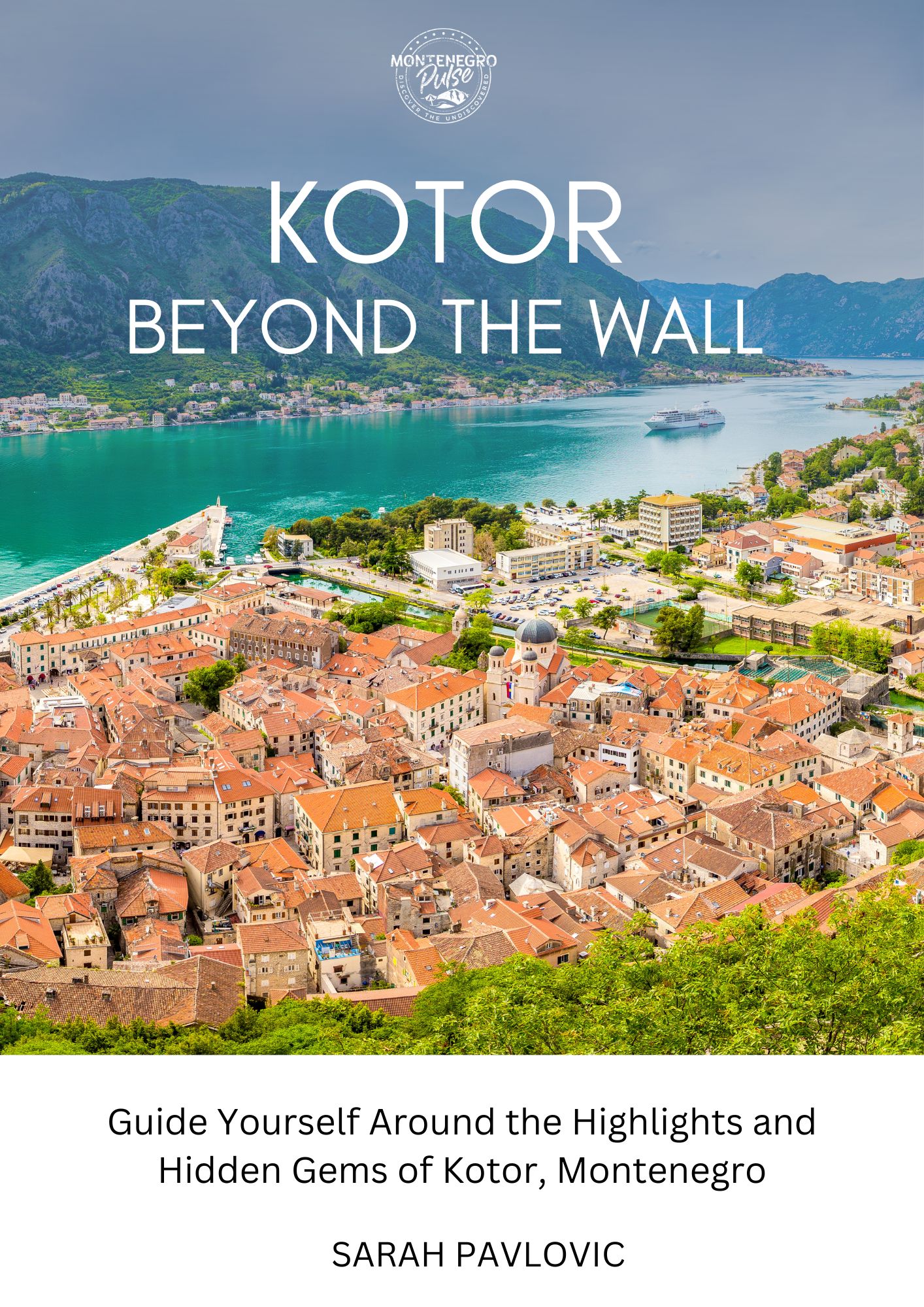
If you prefer to explore Kotor in your own time, my book, Kotor Beyond The Wall, will help you discover the best of Kotor on your own.
You can avoid crowds, explore whenever you like and take as long as you like. The self-guided walking tour that's included will take you around 20 of the town's most beautiful and interesting sights in just two hours. Or you can spread it over days. It's completely up to you.
Inside you'll find information about Kotor - its history, significance and lots of interesting stories about the town's residents. You'll also find important information to help you plan your visit - practical information like what currency to bring, where to buy data and some useful phrases.
Exploring Kotor with the Kotor Beyond The Wall guidebook is like seeing Kotor with your best friend who knows the town like the back of their hand!
kOTOR sECRET tRAIL
Kotor Secret Trail is the most fun way to see Kotor!
If you love escape rooms, puzzles or games you'll love Kotor Secret Trail.
Best described as an outdoor escape room combined with a walking tour, the Kotor Secret Trail leads you around some of the top sights and hidden gems in Kotor. Solving each puzzle brings you to a new sight and unlocks an interesting story.
The game is run entirely on your phone and it's a fun and unique way to see the best of Kotor.
Use the code 'montenegropulse' to get 10% off your purchase of Kotor Secret Trail.
More Highlights of Kotor Montenegro
Aside from seeing the most beautiful and interesting sights in Kotor, here are a few more ways to enjoy yourself in Kotor:
- Go to the beach - Walk along the seaside towards Dobrota and you'll discover Kotor's beaches. Fine pebble beaches line the shore where you'll be able to soak up some sun and enjoy the warm waters of the Bay of Kotor
- Local cuisine - Kotor has lots of good restaurants where you can try local cuisine. Seafood dishes like black risotto, seafood stew and calamari are staples in almost all konobas, traditional restaurants. Head over to Konoba Skala Santa to experience traditional food and hospitality in one of Montenegro's oldest restaurants.
- Charcoal coffee - Charcoal coffee in Cafe Letrika really is one of the highlights of Kotor. At home, most people in Montenegro drink Turkish coffee, a thick, black coffee. In Letrika you can try Turkish coffee with a lump of hot charcoal in it. The charcoal purifies the coffee and it's a unique experience that you'll only find here!
Attractions Near Kotor
Perast
Perast is one of the Bay of Kotor’s most beautiful destinations and it was once the seat of the richest and most powerful families in the Bay of Kotor.
While Kotor is a walled fortress town, Perast’s main street is a kilometre-long promenade of former grand palaces facing the sea. If that weren’t enough, Perast has two island churches floating just offshore, one a Benedictine monastery and the other, Our Lady of the Rocks, a Catholic church and museum that’s open to visitors.
You can drive, take a local bus or take a tour to Perast from Kotor.
Top Tours to Perast from Kotor:
- 2 hour boat tour to Perast and Our Lady of the Rocks
- Kotor Open Tour hop-on hop-off bus tour
- The Old Captain's Smile private tour
- I Want to Stay in Boka Bay Forever private tour
- The Best of the Montenegro Coast private tour
- Kotor Winery Tour private tour
Our Lady of the Rocks
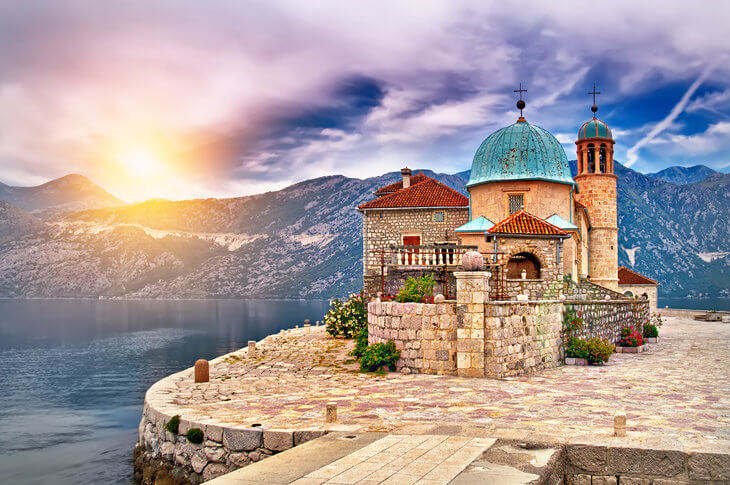 Our Lady of the Rocks. Image: Deposit Photos
Our Lady of the Rocks. Image: Deposit PhotosFrom Perast you can take a short boat ride over to Our Lady of the Rocks, which lies just offshore.
Our Lady of the Rocks is a 500 year old church on a manmade island that was founded after two fishermen found an icon of the Virgin Mary stuck on a rocky crag. Our Lady of the Rocks is now one of Kotor Bay’s most popular tourist attractions and you can visit the church and attached museum.
Top Tours to Perast from Kotor:
- 2 hour boat tour to Perast and Our Lady of the Rocks
- 3 hour boat tour to Our Lady of the Rocks and the Blue Cave
- Kotor Open Tour hop-on hop-off bus tour
- The Old Captain's Smile private tour
- I Want to Stay in Boka Bay Forever private tour
- The Best of the Montenegro Coast private tour
bLUE cAVE
Although it’s actually quite far from Kotor, the Blue Cave is very accessible from Kotor thanks to boat tours. You can take one of these tours from Kotor, visit Our Lady of the Rocks on the way, and then whiz through Kotor Bay and out to the Blue Cave and back in as little as three hours.
Top Tours to the Blue Cave from Kotor:
- 3 hour boat tour to Our Lady of the Rocks and the Blue Cave
- Private 3 hour speed boat tour
- Boka Bay Day Cruise
- Blue Cave Kayak and Snorkelling Adventure
- Speed Boat Adventure with a private guide
- Coasteering tours
Risan Mosaics
Before Kotor’s protective walls made Kotor the preferred residence for the Bay of Kotor’s powerful residents, Risan was the seat of power in the Bay of Kotor. The Illyrians lived here until they were overthrown by the Romans in 167 B.C.
The Risan Mosaics are the remains of a Roman villa that date to the 2nd century A.D. The mosaic floors were only discovered in 1930 and have been painstakingly preserved. In what’s assumed to be a bedroom, there’s a mosaic of Hypnos, the god of sleep and it’s the only one in the world.
The Risan Mosaics is a fascinating attraction for anyone who’s interested in the history of the Bay of Kotor, Romans or Illyrians.
Top Tour to Risan Mosaics from Kotor:
Lovćen National Park
Lovćen National Park lies at the top of the mountain behind Kotor. To get there you travel up the ‘Serpentine Road’ with its 25 switchbacks and hairpin turns.
You'll get fantastic views of the Bay of Kotor from here, especially on clear days when you can see the entire Bay of Kotor from above. Lovćen is also where you’ll be able to visit the Petar Petrović-Njegoš mausoleum and try the local speciality, prosciutto, in Njeguši village.
Top Tours to Lovćen from Kotor:
Accommodation In Kotor
You can stay near Kotor’s attractions by staying in or close to Kotor old town.
The advantage of staying inside the old town is you’ll have everything, including historic sites, restaurants and tours on your doorstep. The downside is that it can be noisy, particularly in the summer, and you don’t have easy access to that inviting sea.
Here are a few of the top places to stay in the old town:
- Hotel Palazzo Druško****
- Historic Boutique Hotel Cattaro ****
- Pearl Apartments
- Old Town Youth Hostel
- Montenegro Hostel B&B Kotor
If you’d rather stay somewhere quiet, want a sea view or prefer beachside accommodation, there are plenty of places to stay in Dobrota and Muo, either side of Kotor old town.
Here are some top places to stay close to the old town:
- HUMA Kotor Bay *****
- Hotel Palazzo Radomiri ****
- Hotel Casa del Mare Essenza ****
- Vila Maestral Kotor
- Apartments Dorothea Lux
- Apartments Los Olivos
- Hostel4U Party
- Hostel Pupa
Find Accommodation in Kotor for yOur Dates
Booking.com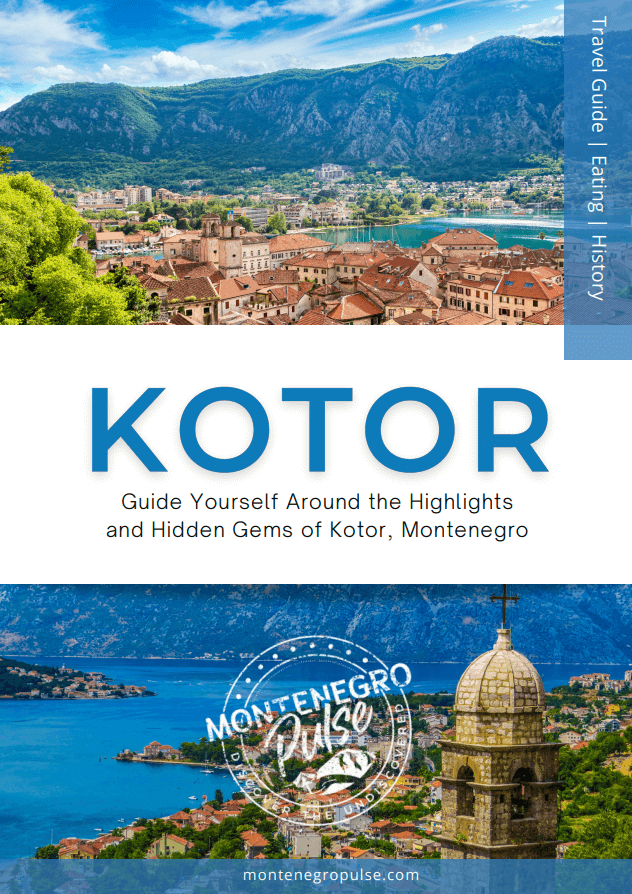
If you are visiting Kotor, my guide to Kotor old town is an indispensable book to take with you. This guide is like having a local best friend to show you the most interesting sights and hidden gems of Kotor.
- Home
- Things to Do in Montenegro
- Highlights of Kotor, Montenegro
